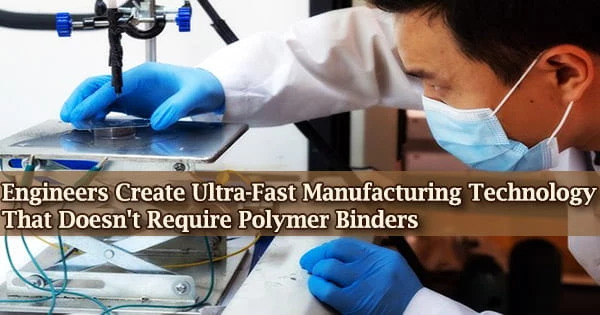A group of engineers at the University of South Florida has developed a new technology that has the potential to change the way wearable electronic sensors are manufactured forever.
They’ve found out a technique to speed up production without using polymer binders, which are the industry standard for printing flexible sensors, which are commonly used to monitor vital signs in medical settings.
Their technology, which was featured on the cover of the journal ACS Applied Materials & Interfaces, uses corona discharge to create a strong electric field between binder-free functional powders like graphene and flexible, non-conductive surfaces like medical tape to print electronic skin, or “e-skin.”
Corona-Enabled Electrostatic Printing uses electrostatic force to print a large number of e-skin sensors in seconds rather than the 20 minutes it takes with polymer binders, and it doesn’t utilize heat. E-skin is a malleable, micrometer-thin technology that may be used to sense strain, temperature, and sound.
As a new, advanced manufacturing strategy, Corona-Enabled Electrostatic Printing will potentially transform the cost structure for large-area and high-performance electronics and enable versatile applications of flexible, functional systems. The technique can help contribute to maintaining the U.S.’s leadership in advanced manufacturing.
Ying Zhong
Long Wang, an assistant professor of mechanical engineering at California Polytechnic State University, and Ying Zhong, an assistant professor of mechanical engineering at USF, discovered that the printing technique has a wide range of applications, including health monitoring, prosthetics, and robotics.
Because there are no sizing restrictions, unlike polymer binders, the approach is a strong contender for roll-to-roll manufacturing of large flexible sensors, which can drastically lower production costs.
“As a new, advanced manufacturing strategy, Corona-Enabled Electrostatic Printing will potentially transform the cost structure for large-area and high-performance electronics and enable versatile applications of flexible, functional systems,” Zhong said. “The technique can help contribute to maintaining the U.S.’s leadership in advanced manufacturing.”
The National Science Foundation recently awarded Zhong a $308,928 grant to further her study, demonstrating that the patent-pending ultra-fast manufacturing technology can be used to print materials other than multifunctional e-skin.





